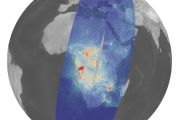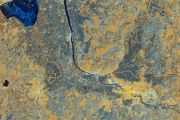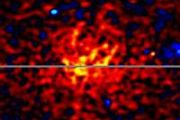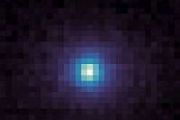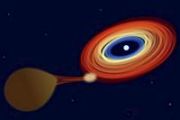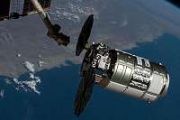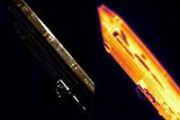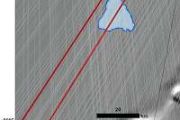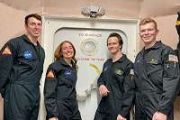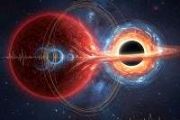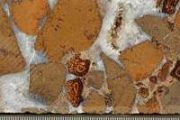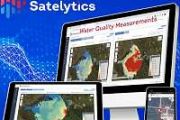
Copernical Team
NASA prepares to fuel James Webb telescope for Dec. 18 launch
 NASA is in the final stages of preparation to launch the nearly $10 billion James Webb Space Telescope, an engineering marvel that may reveal secrets of time and the universe, from South America on Dec. 18.
Technicians are preparing to load the space observatory with fuel that will power it for up to 13 years as it orbits the sun about one million miles from Earth, NASA officials said T
NASA is in the final stages of preparation to launch the nearly $10 billion James Webb Space Telescope, an engineering marvel that may reveal secrets of time and the universe, from South America on Dec. 18.
Technicians are preparing to load the space observatory with fuel that will power it for up to 13 years as it orbits the sun about one million miles from Earth, NASA officials said T Vast patches of glassy rock in Chilean desert likely created by ancient exploding comet
 Around 12,000 years ago, something scorched a vast swath of the Atacama Desert in Chile with heat so intense that it turned the sandy soil into widespread slabs of silicate glass. Now, a research team studying the distribution and composition of those glasses has come to a conclusion about what caused the inferno.
In a study published in the journal Geology, researchers show that samples o
Around 12,000 years ago, something scorched a vast swath of the Atacama Desert in Chile with heat so intense that it turned the sandy soil into widespread slabs of silicate glass. Now, a research team studying the distribution and composition of those glasses has come to a conclusion about what caused the inferno.
In a study published in the journal Geology, researchers show that samples o An artificial material that can sense, adapt to its environment
 Move over, Hollywood - science fiction is getting ready to leap off the big screen and enter the real world. While recent science fiction movies have demonstrated the power of artificially intelligent computer programs, such as the fictional character J.A.R.V.I.S. in the Avenger film series, to make independent decisions to carry out a set of actions, these imagined movie scenarios could now be
Move over, Hollywood - science fiction is getting ready to leap off the big screen and enter the real world. While recent science fiction movies have demonstrated the power of artificially intelligent computer programs, such as the fictional character J.A.R.V.I.S. in the Avenger film series, to make independent decisions to carry out a set of actions, these imagined movie scenarios could now be Late bombardment of the Moon revealed
 The lunar surface is covered by numerous craters that date back to the impacts of asteroids. Age determinations on lunar rocks formed during these impacts show a surprising clustering at ages of about 3.9 billion years before present, or about 500 million years after the Moon was formed. These observations have led to the theory of a Late Heavy Bombardment of the Moon (or LHB).
But what wa
The lunar surface is covered by numerous craters that date back to the impacts of asteroids. Age determinations on lunar rocks formed during these impacts show a surprising clustering at ages of about 3.9 billion years before present, or about 500 million years after the Moon was formed. These observations have led to the theory of a Late Heavy Bombardment of the Moon (or LHB).
But what wa Earth's orbit affects millennial climate variability
 Abundant geological evidence demonstrates that Earth's climate has experienced millennial-scale variability superimposed on glacial-interglacial fluctuations through the Pleistocene. The magnitude of millennial climate variability has been linked to glacial cycles over the past 800 thousand years?(kyr).
For the period before the Mid-Pleistocene Transition, when global glaciations were less
Abundant geological evidence demonstrates that Earth's climate has experienced millennial-scale variability superimposed on glacial-interglacial fluctuations through the Pleistocene. The magnitude of millennial climate variability has been linked to glacial cycles over the past 800 thousand years?(kyr).
For the period before the Mid-Pleistocene Transition, when global glaciations were less UK and France reach new agreement on climate change mission
 The UK Space Agency has provided new funding for a joint British and French MicroCarb mission dedicated to monitoring atmospheric carbon dioxide - the main greenhouse gas responsible for climate change.
Dr Paul Bate, Chief Executive of the UK Space Agency, and Laurence Monnoyer-Smith, Director of Sustainable Development of the French space agency, CNES, signed an implementation arrangement
The UK Space Agency has provided new funding for a joint British and French MicroCarb mission dedicated to monitoring atmospheric carbon dioxide - the main greenhouse gas responsible for climate change.
Dr Paul Bate, Chief Executive of the UK Space Agency, and Laurence Monnoyer-Smith, Director of Sustainable Development of the French space agency, CNES, signed an implementation arrangement Key role of the reactor surface in Miller's experiment on the molecular origin of life
 A team of researchers from the CSIC and the University of Tuscia (Italy) has demonstrated the role that glass played in the historical experiment carried out by Stanley Miller in 1952 to simulate the conditions that would have given rise to life on the early Earth. The results, published in Scientific Reports, open a new way to study the emergence of life.
Miller built a glass apparatus in
A team of researchers from the CSIC and the University of Tuscia (Italy) has demonstrated the role that glass played in the historical experiment carried out by Stanley Miller in 1952 to simulate the conditions that would have given rise to life on the early Earth. The results, published in Scientific Reports, open a new way to study the emergence of life.
Miller built a glass apparatus in AFRL Space Vehicles Directorate holds first Space Cyber Summit
 The Air Force Research Laboratory's Space Vehicles Directorate held an inaugural Space Cyber Summit October 13-14. More than 140 space professionals participated in the in-person and virtual event held at Kirtland AFB.
The gathering included space experts from across AFRL, the U.S. Space Force, several federally funded research and development centers, NASA, and many other organizations.
The Air Force Research Laboratory's Space Vehicles Directorate held an inaugural Space Cyber Summit October 13-14. More than 140 space professionals participated in the in-person and virtual event held at Kirtland AFB.
The gathering included space experts from across AFRL, the U.S. Space Force, several federally funded research and development centers, NASA, and many other organizations. Leicester researchers analyse consequences of China space weapon test
 University of Leicester experts in the military uses of outer space have urged further international dialogue and 'cool heads' following flight tests of a new Chinese hypersonic missile system. Reports of China testing a new orbital launch vehicle, known as Fractional Orbital Bombardment System (FOBS), have fuelled concerns about the nuclear weapon state's advancing military capabilities and pos
University of Leicester experts in the military uses of outer space have urged further international dialogue and 'cool heads' following flight tests of a new Chinese hypersonic missile system. Reports of China testing a new orbital launch vehicle, known as Fractional Orbital Bombardment System (FOBS), have fuelled concerns about the nuclear weapon state's advancing military capabilities and pos NASA to Hold Double Asteroid Redirection Test Launch Preview Briefing
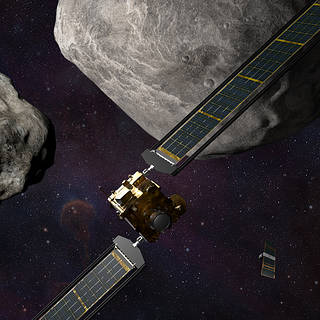 NASA will hold a virtual media briefing at 1 p.m. EDT Thursday, Nov. 4, to preview the launch of the agency’s first planetary defense test mission, the Double Asteroid Redirection Test (DART).
NASA will hold a virtual media briefing at 1 p.m. EDT Thursday, Nov. 4, to preview the launch of the agency’s first planetary defense test mission, the Double Asteroid Redirection Test (DART). 






